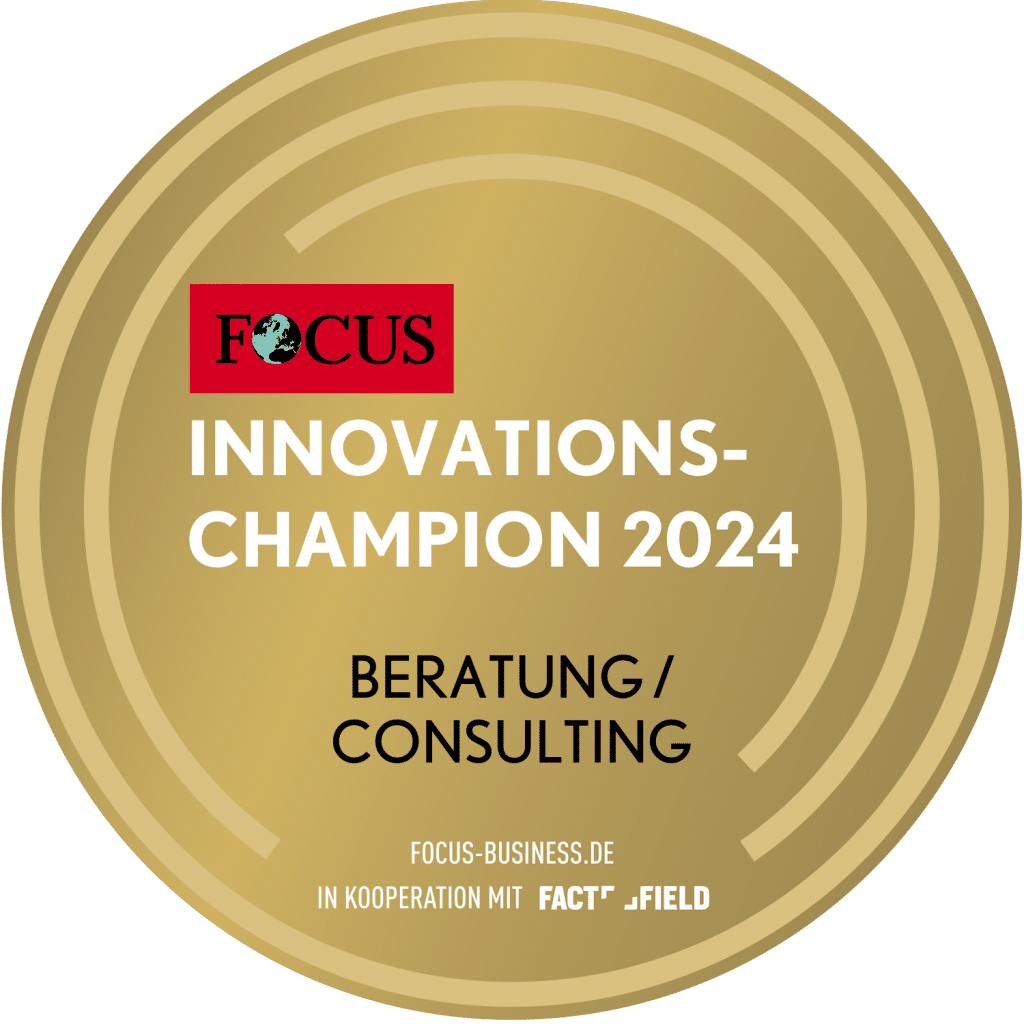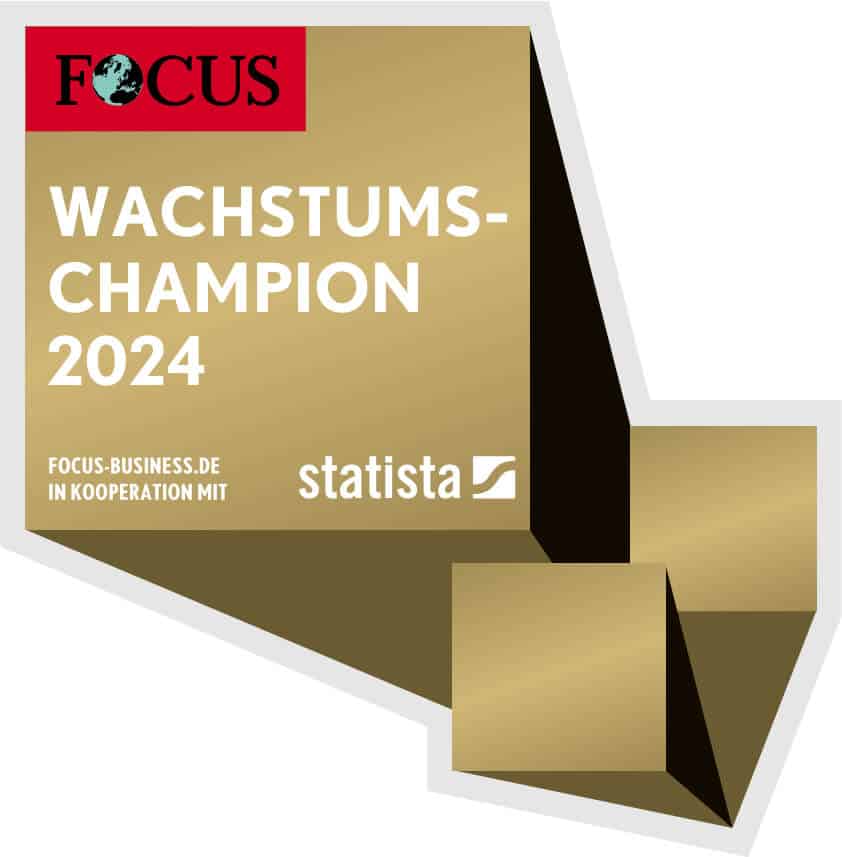When is a product successful? If you had asked this question 10-15 years ago, the answer would probably have been: When it sells well. If you ask this question today, the answer is more likely to be: when it is used as often as possible by as many users as possible. After all, commercial success is usually derived from this. Accordingly, the user must become the focus of attention - and that is precisely the goal of user-centered design. In this article, you will learn, among other things, what this approach is all about and what role users and their requirements play in it. It also looks at the various phases of this unbeatable method and analyzes the fundamental principles that make user-centered design a guarantee of success when implemented consistently.
User-centered design: the focus should be on people
After digitization is finding its way into all areas of life, the design of products and services today determines market success on the one hand and the degree of utilization of tools and solutions provided internally in companies on the other: An alternative is usually just "one click away".

User-centered design (UCD) aims to design products in such a way that they can be used in a variety of ways. a high level of usability (usability). To this end, the future user of a product is placed at the center of the development process and involved in it.
User requirements shape development
Like design thinking, user-centered design is one of the user-centered methods. These two approaches have overlaps, but do not contradict each other. On the contrary: they complement each other perfectly, precisely because their focus is slightly different. While design thinking (DT) focuses on the development of ideas and visions, user-centered design describes the process of designing solutions based on various methods of requirements elicitation.
User-centered design is suitable for the development of software as well as other products that involve interaction with the user.
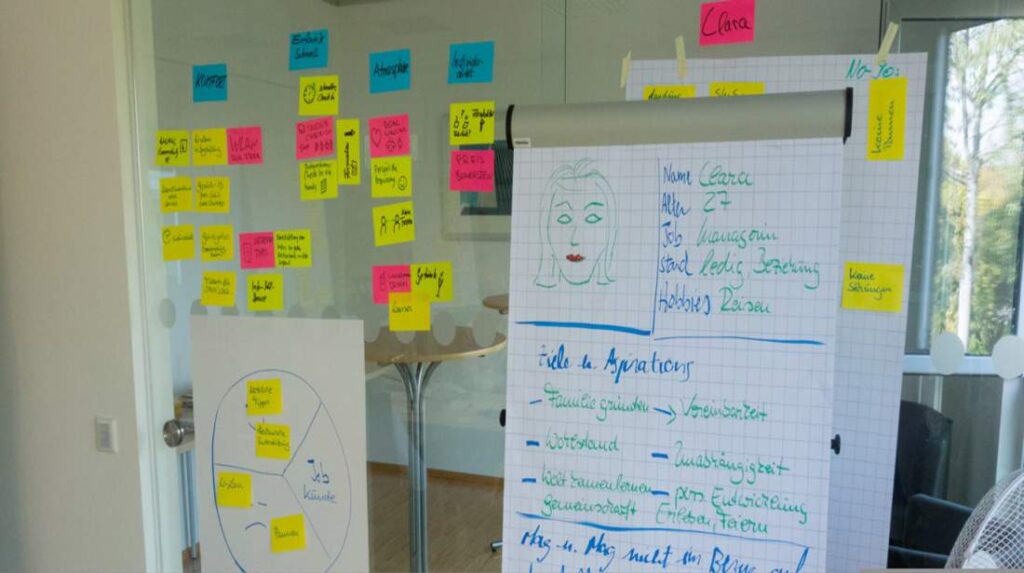
The method has been around since the 1990s. There is even a process model based on it in DIN EN ISO 9241-210, which is dedicated to the design process of usable systems for interaction (ISO, 2010).
There are several phases to go through:
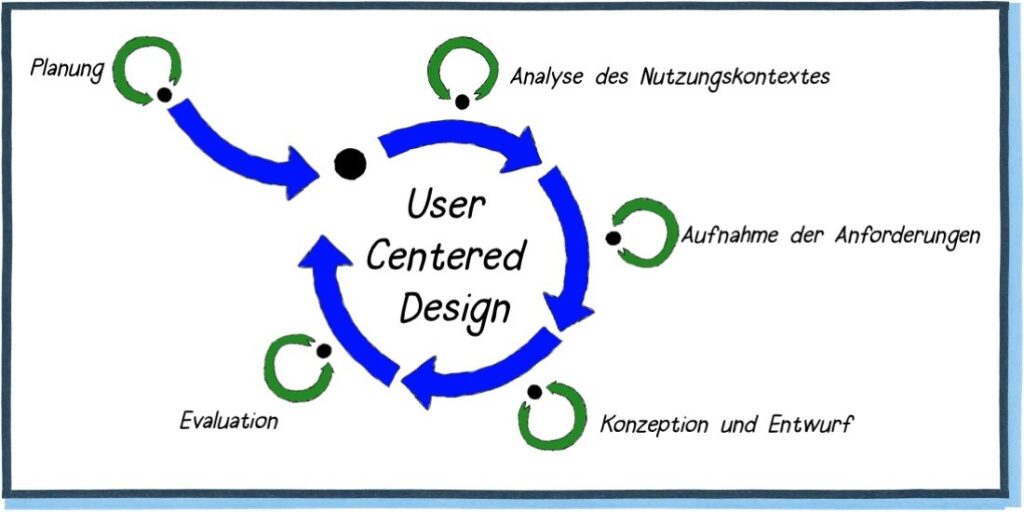
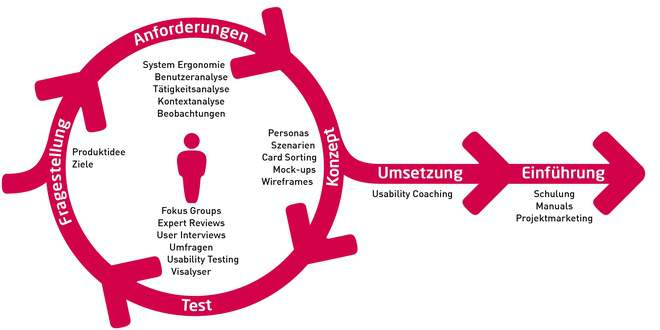
The phases of user-centered design in detail
1. basic planning
In the Planning phase The first step is to plan the activities. For this purpose, central questions arise, on the basis of which the details are concretized, such as
- How should the individual phases be organized?
- How much time is available for each phase?
- What resources does the project team have access to?
- Which users are involved in the design process and how?
- How do you communicate with them in the project?
- Which methods are used in the different phases?
Depending on the initial situation and complexity of the product to be developed, this list of questions can be expanded and individualized.
2. analyze the context of use
During the Analysis of the context of use As much information as possible is collected about the future users. This includes their work processes, their goals and their tasks in the future product. The methods used include service safaris (a method in which members of the project team experience the processes and work of the users themselves for a day), user interviews, workplace interviews and expert surveys. In the method Point-of-view the insights gained by different team members can be summarized in a Bring together a common position.
3. the inclusion of the requirements
In the phase Recording the requirements requirements are recorded or defined based on the findings of the context analysis. The requirements are based on the needs of the users. The requirements go beyond purely functional requirements. In this respect, they can also relate to methods, processes or the organization. User stories, which have already become established in software development with UML, are a frequently used form for recording requirements:
As <Role/persona> I want <Perform activity>, so that I <achieve the following benefits>.
Using a concrete example, this means
As young driverI would like to be able to change the radio station on the steering wheelso that I can can switch off immediately as soon as music comes on that I don't like.
User stories are used to vividly describe the interaction between the user in the context of use (e.g. private/professional, role), the activity and the expected benefit (i.e. what do I want to achieve; as opposed to: how and with what does the system react). Only in this way is it possible to imagine attractive, i.e. beneficial products.
4. conceptualizing and designing
In the phase Concept and design concepts are developed for the future product. For this purpose, alternatives can be considered before a concept is selected. This is then developed further until a complete design is available. In addition to concept documents, mock-ups or prototypes should already be created here. For example, a click prototype of an IT application can already give the user a good impression of what the final product will look like.
Iterations are the central principle of user-centered design
User-centered design is a method that thrives on iteration. The concept and design phase, which can be run through repeatedly, is followed by the Evaluation The concepts and drafts created should be discussed with the users again and again. Mockups and prototypes should be tried out here. This ensures that the users' requirements are actually met. These iterations help to get closer and closer to the optimal solution.
User-centered design in the application
In traditional development projects based on the waterfall principle, user-centred design helps to develop the application according to user requirements and thus minimize risks. However, more and more development projects are being carried out using agile approaches such as Scrum carried out. The question is therefore increasingly crystallizing: How can user-centered design interact with agile methods?
First of all, user-centered design is an excellent method for initially filling a product backlog and later filling it on an ongoing basis. Design sprints that precede the development process are recommended for this purpose. The result of such sprints can be the first click prototype before actually usable software is developed in the following sprints. User stories can be used directly to define the expected behavior of the software and help with planning the solution.
Even in long-term and often expensive (hardware) product development projects, the focus should be on precise needs analysis. In addition, several prototype phases must be passed through before the finished product design is available.
Both user-centered design and Scrum thrive on iterations. This enables the integration of both methods in an overall approach.
Conclusion: User-centered design is the modern way of development
User-centered design is a modern method for developing products that meet user requirements. We use it ourselves and support customers in implementing it in their projects, for example in a Software development projects at an automobile manufacturer. This method also complements Design Thinking and agile approaches such as Scrum very well.
The article was written by Maik Schmalstich - expert for Digital Business Transformation & Design Thinking - and Patrick Müller - Managing Partner of TCI and Head of the Projects & Processes focus team for Engineering.
(Cover image: © baranq | fotolia.com)

